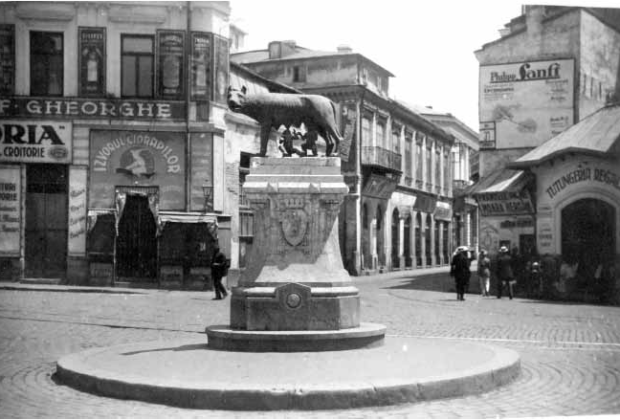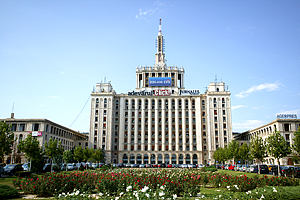
The Italy in Bucharest
Bucharest is proud of the gift offered in 1906 by the City of Rome when celebrating 1900 years since the creation of the Roman province of Dacia. But, the Italian story hidden in Romanian towns is very old. Few know that Moldova had a ruler with Italian origins, Gaspar Graziani (1619-1620) and Transylvania had a brief influence from the Italian military strategist Aloisio Gritti in the sixteenth century. It was the time when the Walachian aristocracy used to send their children to study in the cities of Italy particularly in Padova. Back in the country some of them became rulers like Petru Cercel (1583-1585), who used to wear Renaissance fashion, an earring in his ear and composed lyrics in Italian. Italian was the court language until the eighteenth century, during the reign of Constantin Brâncoveanu (1688-1714) who had as private secretary the Florentine Maria del Chiaro. He is the one who brought Italian workers and builders to raise palaces under the influence of Italian architecture.
The Italian builders were present in Bucharest from the sixteenth century, when the Prince Pătrașcu cel Bun (1554-1557) brought masons and mosaic craftsmen from Veneto and Dalmatia for building up his residence in Bucharest. His son, Mihai Viteazul was also funded by Casa Visconti to fight the Ottoman Empire. Maria del Chiaro wrote in 1718 that Walachia “is an open country with no castles and no closed walls around towns. Its inhabitants are called Romanians and in terms of their language – if any of those who would doubt that the modern Romanian nation comes from the Romans who settled here in the colonies, should carefully observe their language and will recognize that the Romanian language is nothing but simply a distortion of Latin.” Maria del Chiaro sat in Bucharest between 1710 and 1716 being the Latin and Italian Secretary for three rulers: Constantin Brâncoveanu, Ștefan Cantacuzino and Nicolae Mavrocordat. Two hundred years later another Italian made his mark on the Romanian culture: Luigi Cazzavillan Born in 1852 in Arzignano, Cazzavillan, after graduating Chiari Institute in Lombardy enrolls at 18 as volunteer in the Franco-German war in 1870-1871 under the command of Garibaldi. Later, Cazzavillan chose to come and live for the rest of his life in the young Romania, created in 1859 by the unification of Moldavia and Walachia.
He arrived in 1877 in Bucharest and was a teacher for ten years at Sf. Sava and Matei Basarab. In 1881 Cazzavillan founded the Italian-Romanian bilingual newspaper Fraternitatea italo-română. He stated on this occasion: “I want to show the closeness of the two languages – Italian and Romanian – and how easy it will be for Italians to understand the Romanian texts and to the Romanians to understand Italian”.
In 1882 he founded the publication Romanian-Italian Brotherhood that quickly reached 5,000 copies. On 20th August 1884 he launched Universul the highly successful newspaper which was the first information newspaper in Romania.
Although Cazzavillan died in 1902 the newspaper was issued until 1949. Today his memory is kept alive in Bucharest by a street and a park named after him, not far from his private residence. The park has a monument which remembers Cazzavillan’s importance.
The Italian capital entered quite early on the Romanian financial market. Bucharest had a powerful representation of the insurance company “Adria” which managed to resist until 1949. The Italian community in Bucharest was quite active in the first part of the twentieth century and was represented mostly by freelancers, entrepreneurs, builders and specialized traders. Even today, Bucharest accommodates an Italian school an Italian church and professional associations set up by the Italian community.
But the most beautiful gift offered to Bucharest by the Rome City Hall is the replica of the Lupa Capitolina in 1906. From that year, Piața Roma exists in Bucharest, where the monument is still located today at the entrance of Lipscani street.









